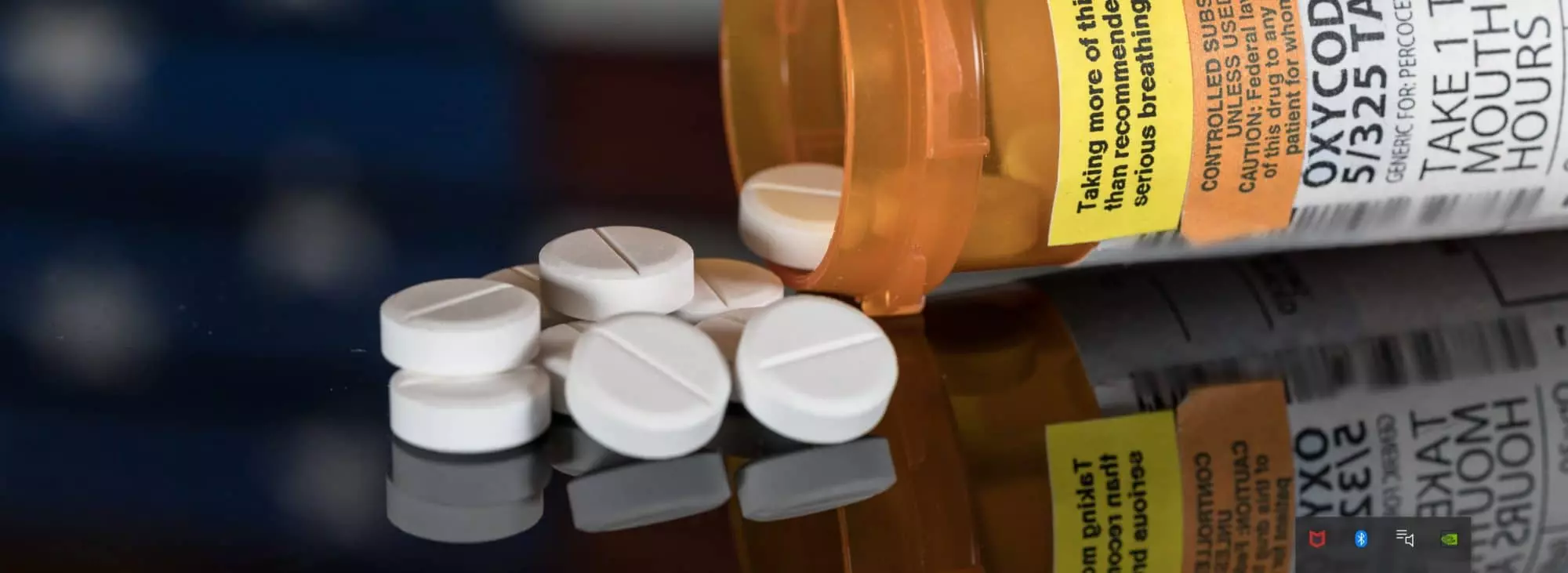Tramadol Withdrawal Symptoms, Timeline, and Treatment Options
Tramadol is a prescription opioid that is typically prescribed to manage moderate to moderately severe pain. Tramadol works by binding to natural opioid receptors in the brain, and therefore blocking the transmission of pain signals.
However, tramadol can cause a number of negative side effects, most notably tramadol addiction. One of the reasons that tramadol addiction can be so difficult for many patients to overcome is because of tramadol withdrawal, which can be quite unpleasant.
If you or a loved one are thinking about quitting tramadol, you may be wondering, how long does tramadol withdrawal last? And what steps can you take to ensure a safe and successful recovery? Read more to find out.
Understanding Tramadol Withdrawal
Tramadol withdrawal comes from having a dependence on the drug, which starts with tolerance to the drug. Let’s explore these concepts below.
When an individual takes tramadol for an extended period of time (even when closely following a prescription), their body eventually becomes accustomed to the presence of the drug. Over time, they will need to take larger and larger doses of tramadol to feel the same effects. This is known as tolerance.
At some point, their body will no longer produce the natural opioids it uses for signal transmission because tramadol is fulfilling that need. In other words, they are dependent on tramadol to function “normally.”
When someone who is dependent on tramadol stops or reduces their dose, they experience a collection of unpleasant symptoms known as tramadol withdrawal.
Tramadol withdrawal causes both psychological and physical withdrawal symptoms. These symptoms often make those attempting to complete tramadol withdrawal relapse (or use again) in an attempt to alleviate or eliminate them. However, medically supervised tramadol detox (or detoxification) can dramatically improve the comfort and safety of those going through tramadol withdrawal.
Tramadol Withdrawal Symptoms

While tramadol withdrawal symptoms will vary from case to case, some are significantly more common than others. Additionally, some rarer symptoms may be potentially dangerous, so it is important to be able to recognize them.
Common symptoms of tramadol withdrawal include:
- Flu-like symptoms, including body aches, chills, excessive sweating, and a runny nose
- Gastrointestinal symptoms, including nausea, vomiting, diarrhea, and abdominal cramps
- Psychological symptoms, including mood swings, anxiety, irritability, and depression
- Difficulty falling or staying asleep (insomnia)
- Muscle aches and pains
Severe and potentially dangerous symptoms of tramadol withdrawal include:
- Seizures
- Serotonin syndrome, typified by confusion, hallucinations, rapid heartbeat, and elevated body temperature
- Suicidal thoughts
It is critically important that anyone experiencing any of the potentially dangerous symptoms of tramadol withdrawal seek immediate professional help.
How Long Does Tramadol Withdrawal Last?
While every instance of tramadol withdrawal will vary in length, it will generally last about two weeks. Below, we’ve outlined the different phases of tramadol withdrawal, so you know what to expect.
24 – 48 Hours After Last Dose (Early Withdrawal)
- Symptoms typically begin within the first two days after the last dose of tramadol.
- Symptoms are relatively low in number and severity and may include:
- Anxiety
- Restlessness
- Sweating
- A runny nose
- Nausea
- Vomiting
- Diarrhea
3 – 5 Days After Last Dose (Peak Withdrawal)
- Symptoms are typically the most numerous and severe between 3 and 5 days after the last dose.
- Early withdrawal symptoms typically worsen.
- Additional symptoms may show up at this point, including:
- Muscle pain
- Insomnia
- Mood swings.
- It is at this point that potentially dangerous symptoms, such as seizures are most likely.
1 – 2 Weeks After Last Dose (Subacute Withdrawal)
- Symptoms usually begin to subside by about a week after the last dose, and most have disappeared entirely by the end of the second week.
- Symptoms present at earlier phases are usually at reduced severity.
- General discomfort and psychological symptoms such as mood swings and insomnia may still linger.
2 Weeks – 2 Years after Last Dose (Post-Acute Withdrawal)
- In some cases, symptoms may persist for up to 2 years after acute withdrawal ends. This is known as post-acute withdrawal syndrome, or PAWS.
- PAWS symptoms generally decrease in severity and frequency over time, and are generally psychological in nature, including:
- Mood swings
- Anxiety
- Difficulty concentrating
It’s important to note that every case of tramadol withdrawal is different. The length and severity of withdrawal symptoms depend on factors like:
- How long the individual took tramadol
- What dosage of tramadol the individual was taking
- How frequently the individual used tramadol
- Individual differences in metabolism, overall health, genetics, and physiology
- Whether cessation of tramadol use was gradual (tapered) or “cold turkey” (stopped entirely at once)
- The presence of any co-occurring medical, mental health, or substance use disorders
- How much medical, mental, social, and emotional support the individual has
Managing Tramadol Withdrawal

Managing tramadol withdrawal can be challenging, but it is absolutely possible.
There are many self-help strategies that can help patients get through tramadol withdrawal, in addition to medical and therapeutic interventions.
Psychiatric mental health nurse practitioner (PMHNP) Valerie Puffenberger provides the following self-help tips for coping with tramadol withdrawal symptoms:
- Rest often and stay hydrated – Listen to your body and don’t push yourself too hard, especially early on in withdrawal.
- Join a support group – Connecting with others going through the same battles will keep you motivated and lay the foundation for possible future friendships.
- Create a positive retreat space – Surround yourself with calming smells, cozy blankets, uplifting entertainment as a refuge when symptoms seem relentless.
- Engage in light exercise – If you’re feeling up to it, gentle exercise like walking can help calm the mind and body, while building healthy habits for the future.
- Don’t quit cold turkey – Suddenly stopping tramadol can cause more severe withdrawal symptoms, which could make it harder to quit altogether. Tapering off is recommended.
If you’re working with a medical professional to taper off tramadol (which is highly recommended) they may suggest you take medication(s) like:
- Clonidine to manage symptoms like anxiety, agitation, sweating, and runny nose.
- Non-opioid pain relievers like acetaminophen and non-steroidal anti-inflammatory drugs (NSAIDS) to manage pain and discomfort.
- Antiemetics like ondansetron and promethazine to control nausea and vomiting.
- Benzodiazepines like diazepam to manage anxiety and insomnia.
- Antidepressants (especially SSRIs) to manage mood symptoms and serotonin syndrome.
Your mental health is just as important as your physical health, especially during withdrawal. There are different types of therapies you and/or your doctor may consider to help get you through tramadol withdrawal, including:
- Cognitive behavioral therapy (CBT) to manage anxiety and depression.
- Individual counseling to provide a safe space for you to explore feelings, concerns, and triggers.
- Group therapy to provide peer support and community.
- Mindfulness meditation to manage stress and reduce anxiety.
- Motivational enhancement therapy to increase the motivation to achieve sobriety.
- Relapse prevention therapy to prevent the return to use.
- Holistic therapies to provide an outlet for expression, relaxation, and self-discovery.
Tramadol Withdrawal vs. Other Opioids
Tramadol withdrawal is similar to withdrawal from other opioids. However, there are some unique aspects because tramadol has a dual mechanism of being both an opioid and a serotonin-norepinephrine reuptake inhibitor (SNRI).
Similarities that tramadol withdrawal shares with withdrawal from other opioids include:
- Early withdrawal symptoms, including anxiety, restlessness, sweating, and gastrointestinal issues
- Muscle aches and pains.
- Difficulty falling and staying asleep, as well as generally disrupted sleep patterns.
- Certain psychological symptoms, including anxiety, mood swings, and irritability.
- The two-week withdrawal timeline, including early, peak, and subacute withdrawal phases.
Unique challenges of tramadol that are not common to other opioids include:
- Some symptoms, especially anxiety and agitation, may be more intense with tramadol than other opioids as a result of its influence over serotonin levels.
- Serotonin syndrome is a risk associated with tramadol that is not present with other opioids.
- The risk of seizures during withdrawal is higher with tramadol than other opioids, especially when doses are high, or use is abruptly discontinued (stopped cold turkey).
- Tramadol withdrawal is often more severe compared to other opioids of similar strength, especially when the individual is taking a high dose.
- Because tramadol functions both as an opioid and a SNRI, it is more important that a careful tapering method be used, which is different than what is used with withdrawal from other opioids.
Get Help for Tramadol Withdrawal
Tramadol withdrawal can be highly unpleasant, and in some situations it can even be dangerous. The symptoms of tramadol withdrawal make many of those who intend to seek sobriety fall victim to relapse.
Luckily, you don’t have to go through it alone. Legacy Healing Center is here to help you or your loved one get through withdrawal and then achieve and maintain lasting sobriety.
From detox to aftercare, we use a holistic approach that heals each patient’s mind, body, and spirit. Some of the many services and treatments we provide include, medication management, evidence-based psychotherapy, and peer support from those who know what you’re going through.
Call Legacy at 888-534-2295 today to learn how we can help you recover from tramadol and live the life you deserve.
Tramadol Withdrawal FAQs
What are the symptoms of tramadol withdrawal?
The symptoms of tramadol withdrawal will vary from person to person. However, there are some symptoms that are more common than others, including:
- Body and muscle aches and pains
- Chills
- Excessive sweating
- Runny nose
- Nausea
- Vomiting
- Diarrhea
- Abdominal cramps
- Mood swings
- Anxiety
- Irritability
- Depression
- Insomnia
There are also more serious symptoms like seizures, serotonin syndrome, and suicidal thoughts, which you should immediately seek medical attention for if you experience them.
How long does tramadol withdrawal last for most people?
How long tramadol withdrawal typically lasts depends on a large number of factors unique to the individual and the situation. However, most individuals can expect a timeline similar to this: The first tramadol withdrawal symptoms typically appear within 24-48 hours of the last dose. Symptoms usually worsen and increase in number for about 3 to 5 days. After approximately a week, symptoms will usually start to subside and disappear until most are gone about 2 weeks after the last dose. In some cases, PAWS symptoms may last for up to 2 years.
Are there any remedies to ease tramadol withdrawal symptoms?
While it is always highly advisable that patients seek out medically supervised tramadol detox, there are some remedies that will ease tramadol withdrawal symptoms. Some examples include:
- Water, herbal teas, and clear broths for hydration
- Fruits, vegetables, and whole grains and other nutritious foods support overall health and increase mood
- Over-the-counter pain relievers like ibuprofen and acetaminophen can help reduce pain and discomfort
- Hot baths and showers can alleviate muscle and body aches
- Adequate rest and a regular sleep routine is essential for the body’s recovery
- Gentle exercise such as walking and stretching can release endorphins and improve mood
- Therapies that support relaxation such as mindfulness meditation, deep breathing exercises, and yoga, can reduce stress
Can tramadol withdrawal cause an overdose?
Tramadol withdrawal alone cannot directly cause an overdose; however, it can indirectly cause a person to overdose.
Many times, those who are going through withdrawal will feel as though it is impossible to get through and will relapse in order to avoid feeling anymore symptoms. Sometimes, users may overdose during relapse, especially if they have overestimated their current tolerance or if they want to end severe symptoms quickly.
How is tramadol withdrawal different from other opioids?
Tramadol withdrawal is different from opioids primarily because tramadol is not just an opioid: it has a dual action mechanism and also functions as a serotonin-norepinephrine reuptake inhibitor. This means that individuals going through tramadol withdrawal must also deal with the withdrawal effects of the SNRI component, which is not the case with other opioids.
As a result, individuals going through tramadol withdrawal often face more severe withdrawals than those experienced by individuals going through withdrawal from other opioids. Serotonin-related symptoms, such as anxiety and agitation are likely to be more severe. Additionally, seizures are more likely with tramadol withdrawal, and serotonin syndrome is a possibility. In terms of treatment, a more careful tapering method is employed with tramadol than is common with other opioids.
Sources
- Mayo Clinic. (2023). Tramadol and Acetaminophen (Oral Route).
- National Health Service. (2022). Common Questions about Tramadol.
- Medline Plus. (2023). Tramadol.
- Drug Enforcement Administration. (2023). Tramadol.
- Food and Drug Administration. (1995). Highlights of Prescribing Information.
- National Library of Medicine. (2009). Withdrawal Management.






